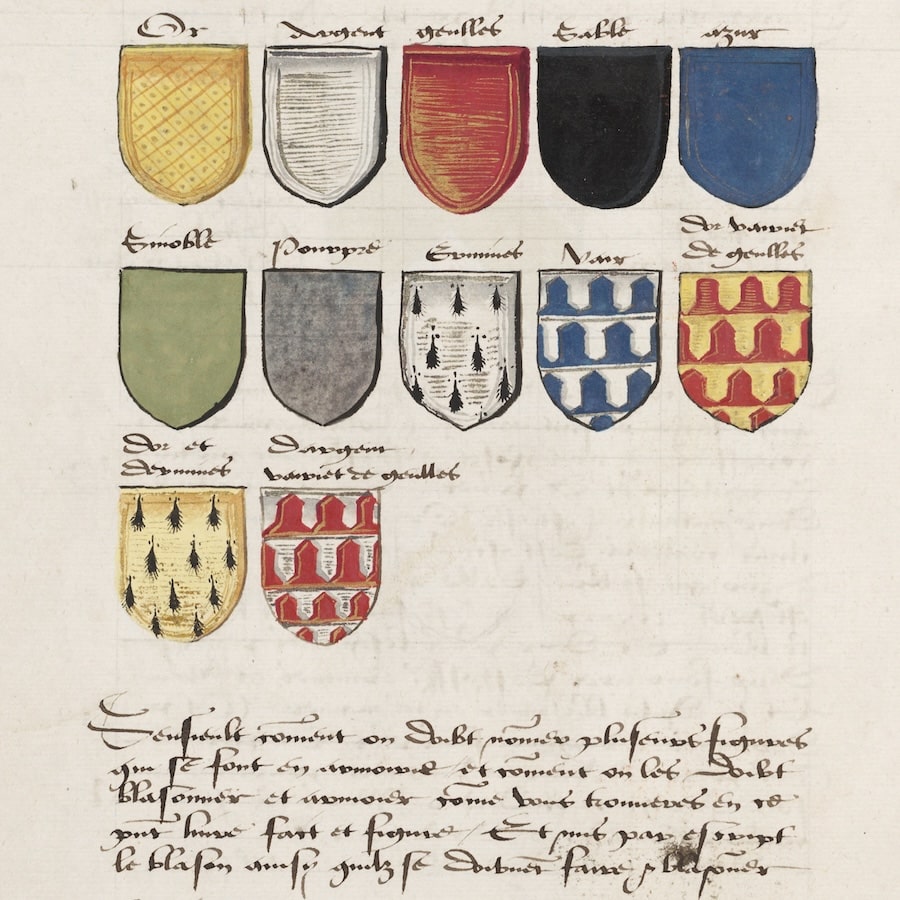Héraldique
Héraldique
Scaricamazza
·1723·
Scaricamazza
·1723·
What is the blazon?
What is the blazon?
In our first lesson – in which we answered our first question “what is heraldry?” – we anticipated today’s question: what is the blazon? We did this by stating that «to become heraldic, emblems must follow very specific rules, the rules of blazon»; we continued by saying «the blazon is the grammar of heraldry but this answer, you can easily understand it, requires another lesson». Well, let’s face the problem more seriously. All of us, in all languages, have used the word “blazon” as a synonym for coat of arms. We weren’t wrong but we can be more precise, using nuances.
Let’s read the Collins English Dictionary definition of the verb “to blazon”: «[1] To describe heraldic arms in proper terms». Now let’s look at those of the name “blazon”: «[2a] Conventional description or [2b] depiction of heraldic arms; [3] any description or recording, esp. of good qualities».
Let’s say right away that the action of blazon, for centuries, has been more commonly called “the blazoner”. However the earliest known use of the noun “blazoner” is in the late 1500s, before this date it was simply used “blazon”. The blazon, therefore, is both the action of describing a coat of arms (1) and the description (2a and 3: in this case, we repeat, “blazon” is synonymous with “blazoner” or “blazonment”).

Very good but we forgot point 2b: the blazon is the representation of the coat of arms! This depiction, like its description, must follow some rules to be correct. Precisely for this reason we say that the blazon is the grammar of heraldry. Soon, in several lessons, we will deal with the vocabulary and structure of the blazoner. Now let’s focus, albeit briefly, on the rules that underlie its depiction.There are few and they too will be looked at specifically in the next lessons. Let’s summarize the main thanks in the words of Michel Pastoureau:
«Armorial bearings are made up of two elements, charges and tinctures, which are placed on a shield whose contour lines can take various shapes. […] if this object is a banner, the trappings of a horse or a piece of clothing, its border may also form the border of the arms. […] They obey a small number of binding rules of composition. ([…] Blazon arranges its six tinctures in two main groups – metals and colours. (There is also a third group, furs: Ermine and Vair.) It places Argent and Or in the first, Gules (red), Sable (black), Azure (blue) and Vert (green) in the second. The basic rule is that a color may not be placed on a color or a metal on a metal».¹
In other texts², Pastoureau adds that not only we must avoid superimposing two tinctures of the same group but also our juxtaposition, placing them next to each other; rule much more difficult to follow and therefore largely disregarded. As far as the choice of figures for a coat of arms, we don’t have to worry too much: it is unlimited. Are there any good guidelines, norms, that aren’t actual rules? Of course, but now you are talking about the principles on which heraldic design is based: stylization, expression and composition.
For this, obviously, we need another lesson (or perhaps many others)!
¹Pastoureau, M. (1997), Heraldry: its Origins and Meaning, London: Thames & Hudson, pp 44-46.
*Pastoureau, M. (2017), Figure dell’araldica, Milano: Ponte alle Grazie, p. 29.